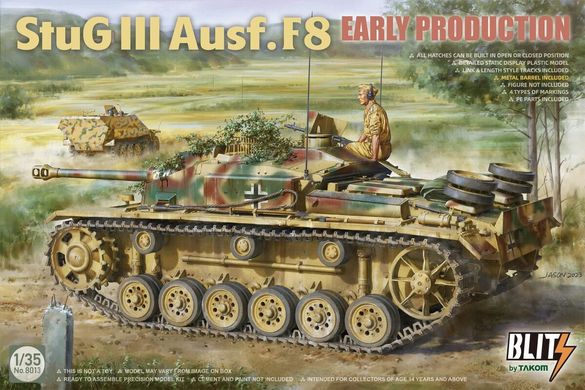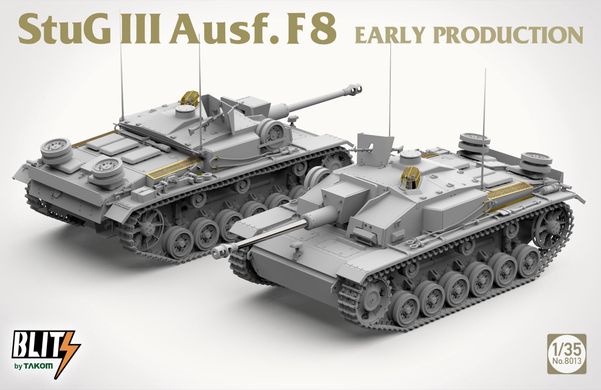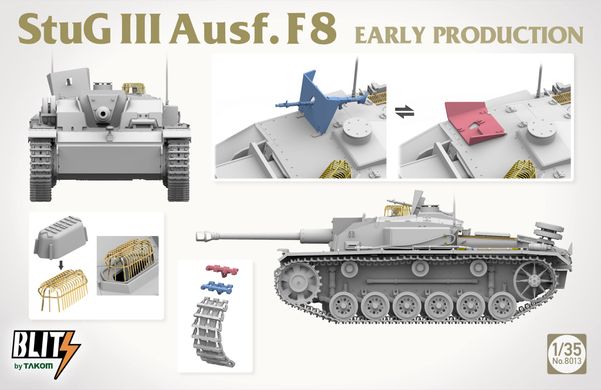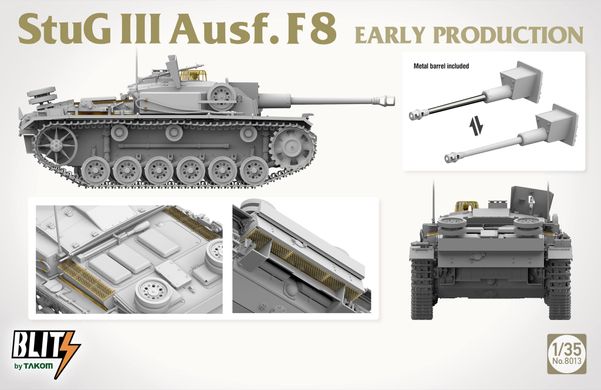StuG III (Sturmgeschutz III) is a German armored gun of the Second World War. The first prototypes of the machine were created in 1937, and serial production lasted from 1940 to 1945, ending with the release of about 10,300 machines. The StuG III in the E version was equipped with one Maybach HL 120 TRM engine with a capacity of 300 hp. It was armed (variant E) with a 75-mm short-barreled gun. and 1 MG34 7.92 mm machine gun. The StuG III was created as a result of the initiative of Erich von Manstein, who in a letter to General Beck in 1935 signaled the need to create assault artillery for the advancing infantry as part of the Wehrmacht's mechanized units. Ultimately, Daimler-Benz was commissioned to design a new machine, which in turn used the chassis of the PzKpfw III Ausf. B. In the course of mass production, several modifications of the StuG III weapon were released. Chronologically, the first was version A, armed with a 75 mm Stuk 37 L/24 gun and based on the PzKpfw III Ausf tank chassis. F and G and were produced from the beginning of 1940. Shortly after that, version B was created - the first serially produced, which differed only slightly from version A. In 1941, version D went into production, which had better booking and aiming devices. Version E was quickly created, which was the first to receive secondary armament in the form of the MG34 machine gun. At the beginning of 1942, the StuG III underwent a major modification, becoming a de facto tank destroyer due to the installation of a long-barreled 75-mm gun StuK 40 L/48. The station wagon designation was changed to StuG 40. In the period 1940-1945, StuG III served on almost all fronts where the German army fought. It turned out to be a very useful weapon, cheap to manufacture and, most importantly, effective. Various versions of the StuG are estimated to have destroyed around 20,000 Soviet tanks and armored vehicles between 1941 and 1945.























